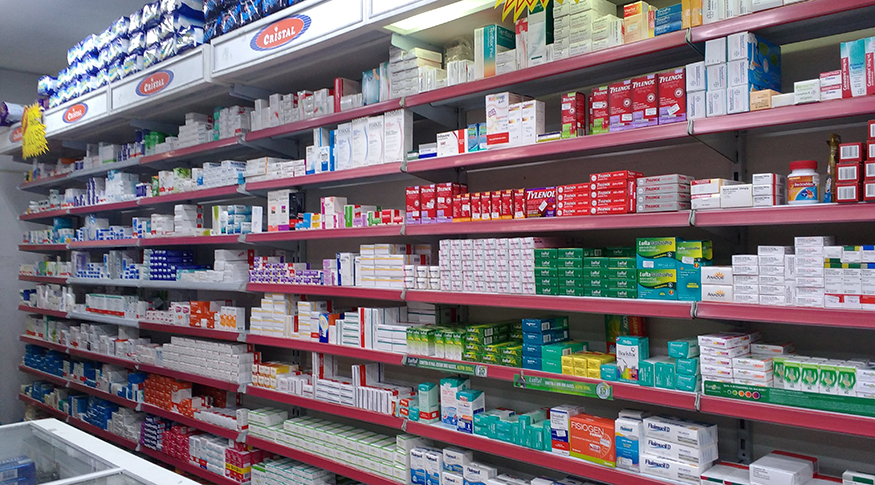Monthly Survey of Trade
Retail sales change 0.1% in May, fifth consecutive rate on positive side
July 13, 2022 09h00 AM | Last Updated: July 13, 2022 02h24 PM

Volume of sales of the retail trade in Brazil changed 0.1% in May compared with the previous month, registering the fifth consecutive rate on the positive side - 2.3% in January, 1.4% in February, 1.4% in March and 0.8% in April. As a result, the level of the sector is 6.0% above the lowest level in the last months, which was in December 2021. In the year, the retail accumulates a growth of 1.8% and in the last 12 months, a drop of 0.4%.
These data are from the Monthly Survey of (PMC), released today (13) by the IBGE.
“This result shows a stable scenario between April and May. Although it just recorded four positive figures, the rates came in descending order. We notice an upturn in the retail trade, though from a low basis (December) and always registering a less intense accumulation along these months,” highlights Cristiano Santos, manager of the PMC.
Among the eight activities surveyed, six had positive rates in May. Books, newspapers, magazines and stationery recorded the most intense rise (5.5%). In terms of influence, the highlights on the positive side were the sectors of Pharmaceutical, medical, orthopedic articles and toiletries (3.6%) and Fabric, wearing apparel and footwear (3.5%). On the other hand, Furniture and domestic appliances (-3.0%) and Other articles of personal and domestic use (-2.2%) were the negative highlights.
“Furniture and domestic appliances is an activity that did not surpass the pre-pandemic level, as it registered significant losses along 2021. During the pandemic, these items recorded an important gain, due to the replacements people did as they stayed more at home. After that extraordinary demand, these items lost importance in the budget of families, especially house appliances,” analyzes the manager of the PMC.
He highlights that, in the pharmaceutical sector, the growth of volume was anchored in the pharmaceutical industry and less in the segment of toiletries. “This is the second consecutive month of rise and it matches with the adjustments of the sector in the months of April and May,” explains him. “In the case of wearing apparel and footwear, we registered some months of growth, especially in the sector of sports footwear, with all the months on the positive side,” complements Santos.
Impact of inflation on trade
Other highlights are the sectors that suffered the impact of inflation. Revenue increased 0.4% and volume, 0.1%, a difference that already signals inflation in the general trade. However, some sectors registered a more intense impact of inflation.
“The sector of fuels and lubricants has been showing, over the last months, quite higher revenue indicators than those of volume. Between April and May, the revenue of the sector rose 3.5%, whereas volume grew 2.1%. In other activities, like Pharmaceutical, medical, orthopedic articles and toiletries, revenue grew 5.0% and volume, 3.6%, due to price adjustments. The best example is the sector of supermarkets, which grew 1% in volume and 4.1% in revenue between April and May, i.e., four times more, signaling a food inflation,” completes the manger of the PMC.
In the extended retail trade, which includes vehicles and construction material besides retail, the two activities were also impacted by inflation. Vehicles and motorcycles, parts and accessories changed -0.2%, whereas Construction material dropped 1.1% between April and May 2022.
“Every retail indicators shows a loss in pace. The marginal indicator changed from 2.4% in January to 0.1% between April and May. The cumulative index of the retail trade grows from 1.6% in March to 2.3% in April and then falls to 1.8% in May, reducing the growth pace in the year. The cumulative indicator in 12 months (-0.4%) is the first negative figure since September 2017. This indicator crossed the entire pandemic with positive or null results, like in May, June and July 2020. Nevertheless, no negative rate occurred,” concludes Santos.
Regional results
Between April and May, the retail trade recorded positive figures in 18 out of 27 Federation Units, highlighted by: Minas Gerais (3.6%), Rio Grande do Sul (3.1%) and Roraima (3.1%). Nine out of 27 Federation Units were on the negative side, highlighted by Rondônia (-2.8%), Rio Grande do Norte (-2.3%) and Tocantins (-2.1%).
In the same comparison, the extended retail trade changed 0.2% between April and May, with positive figures in 15 out of 27 Federation Units, highlighted by: Tocantins (3.6%), Rio Grande do Sul (3.5%) and Sergipe (2.5%). On the other hand, 12 out of 27 Federation Units pressed negatively, highlighted by Ceará (-5.3%), Amazonas (-3.1%) and Rio Grande do Norte (-3.0%),
More about the survey
PMC produces indicators to monitor the short-term behavior of retail trade in Brazil, investigating the gross revenue of formal enterprises with 20 or more employed persons and whose major activity is retail trade.
Having started in 1995, the PMC brings monthly results of changes in sales volume and nominal revenue for retail trade and extended retail trade (cars and construction material) for Brazil and Federation Units. The results are available on Sidra.


















